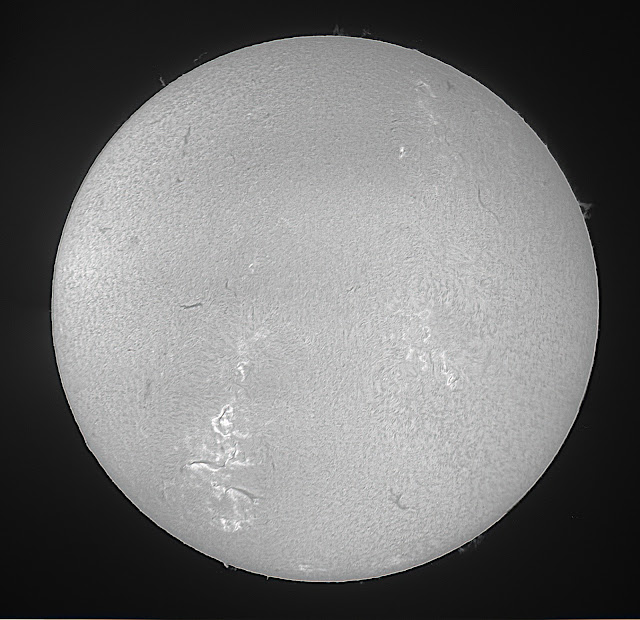What a difference a day makes! Yesterday, the Sun seemed stable and well-behaved. But AR 3032 (in the middle of the sunspot groups at the bottom left of the disk image—a ring-like structure in the non-inverted image) is growing rapidly and has developed a Beta magnetic field. It has already emitted a long-duration M3-Class flare that persisted for more than 3 hours, knocked out shortwave radio transmissions in Japan and East Asia, and sent a huge coronal mass ejection into space. The swirls of plasma visible around AR 3032 and its bright core (in the non-inverted image) illustrate the complexity of its field and its potential for activity. More spectacular flares are expected.
The trials, tribulations and small triumphs of a Charlotte, NC astronomer imaging under Bortle 8/9 skies.
Subscribe to:
Post Comments (Atom)
M 33 -- 2.5 hours with the Seestar S50
Last night, we had extremely clear and transparent skies here in Charlotte. Rather than drizze and stack it myself, I took the image below f...

-
I had a couple of emails asking how to defork an ETX telescope. The ETX 90 and ETX 125 were optically superb scopes, but the mounts left a...
-
The ZEQ25 doing its stuff on a cold night--imaging the Orion Nebula with an 8 inch f/4 astrograph. Note the lovely Christmas rug :) As ...
-
One of the great things about being a part of an online community of people with similar interests is that you learn a lot from people who a...





No comments:
Post a Comment